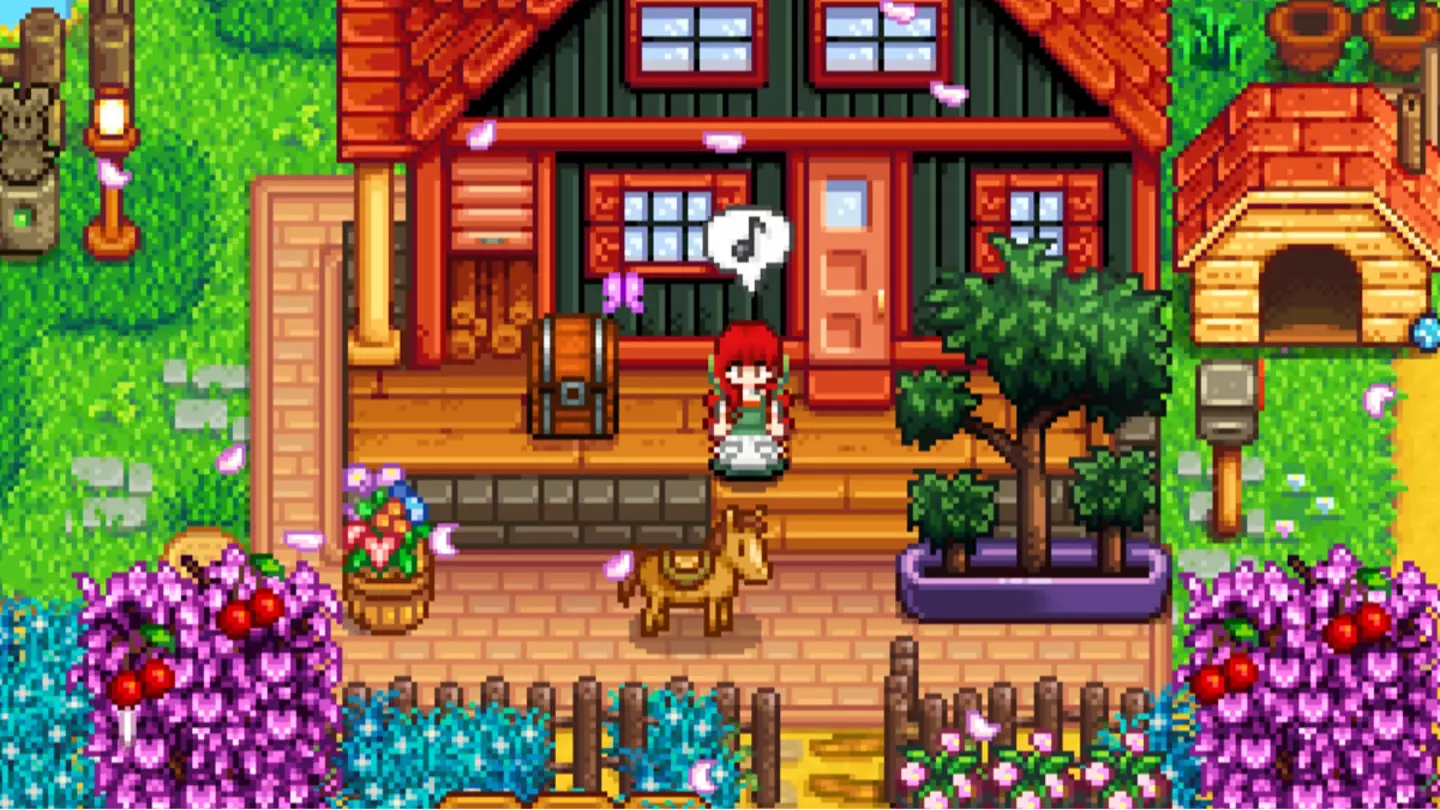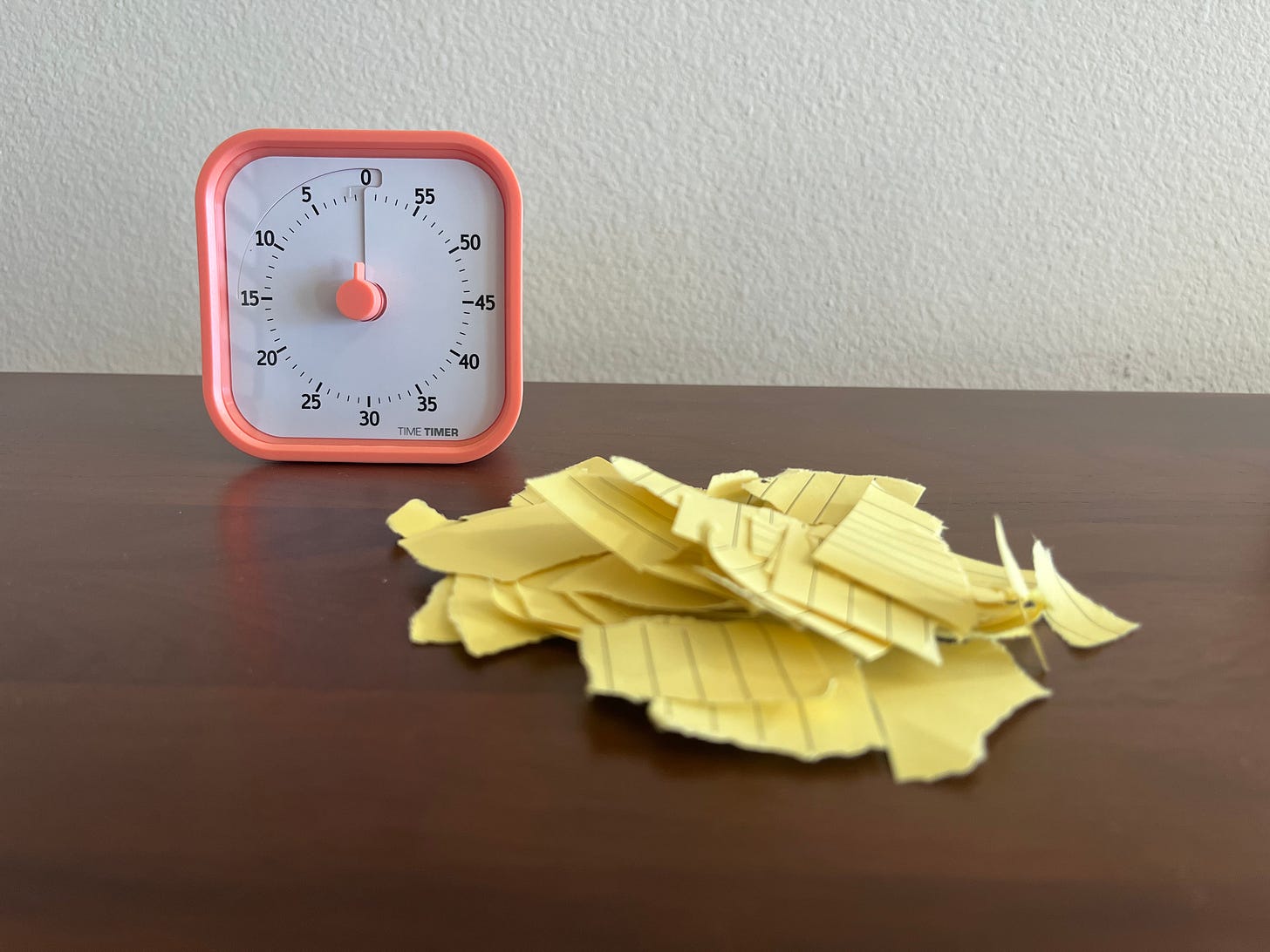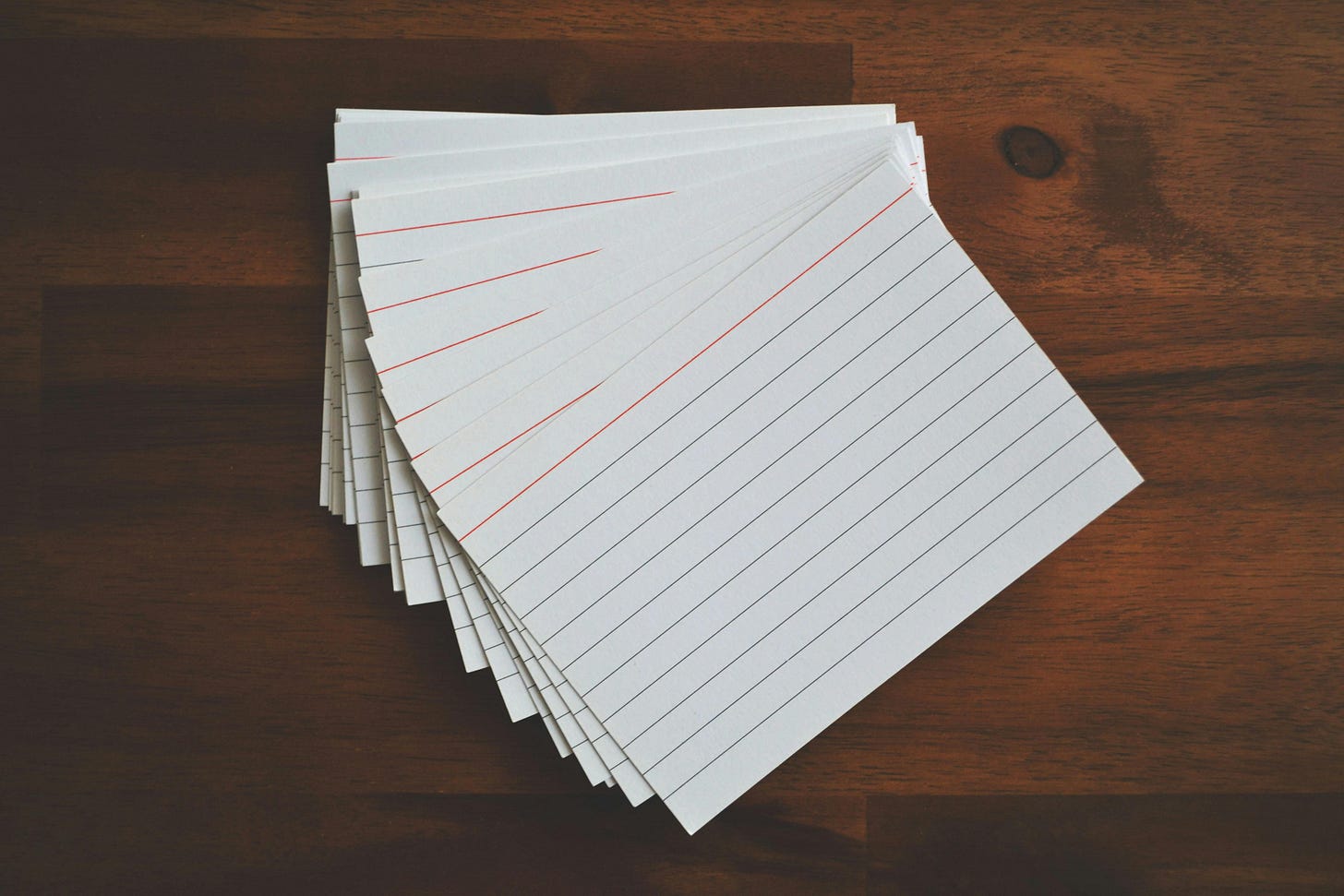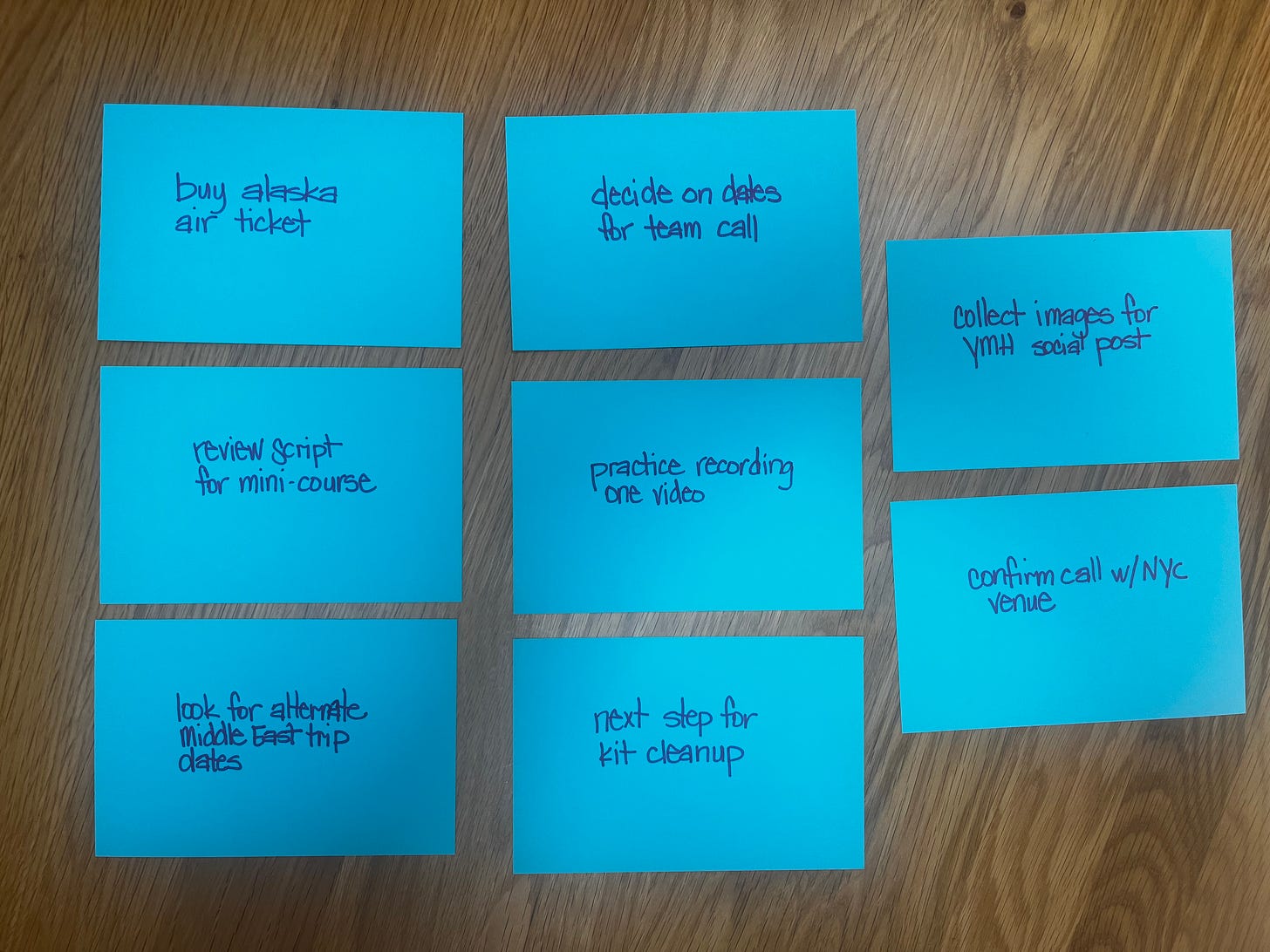The Stardew Valley Guide to Finishing Things
Video games can capture our attention for hours, but we struggle to complete simple tasks. Try this tactile index-card game to bridge the gap.

Picture this: It's 2am. You've just spent the last six hours completely absorbed in a game—maybe you were building the perfect city, managing a virtual restaurant, or tending to digital crops. You planned every move, optimized every decision, and felt genuinely satisfied watching your progress bars fill up. You felt focused, motivated, and strangely productive.
Now picture a weekday morning, or whenever you begin a typical session at work: You stare at your to-do list for twenty minutes, feeling overwhelmed by tasks like "respond to emails" and "schedule doctor’s appointment." The same brain that can spend hours happily organizing virtual inventory suddenly feels paralyzed by folding real laundry.
You spend the time on other things—you check messages, read the news, or pretty much anything you can think of besides the things you need to do.
If this sounds familiar, you're not alone. Millions of people can maintain laser focus while collecting digital coins, leveling up fantasy characters, or managing imaginary farms, yet struggle to motivate themselves through basic daily tasks. It's not about intelligence, willpower, or "being lazy." It's about how our brains respond to different types of structure and feedback.
Universal Gaming Elements
If you've ever played farming simulators like Stardew Valley or Animal Crossing, city builders like SimCity, or any other “resource management” games, you’ve probably experienced these common elements of game design:
Clear, bite-sized tasks ("plant seeds, then water the crops”)
Immediate visual feedback (progress bars that actually move)
Tangible completion (a satisfying ding or notification when something's done)
Gentle structure without overwhelming pressure
Visible progress toward specific goals
These games tap into something profound about how motivation actually works—and it's the opposite of most productivity advice. We do our best work when it feels fun and rewarding.
Okay, Let’s Get to the System
You’ll need two physical items:
A stack of index cards or post-it notes (any small squares or rectangles of paper will work fine)
Something to write with
That’s it! If you use other systems during your day, like a digital note-taking or to-do list app, or a physical journal or planner, no problem—you can use this setup alongside anything else you already use.
To get going, think about a bunch of things you need to do, and write EACH TASK ITEM on a single index card. They could be tasks you’re already working on, tasks you’re currently procrastinating, a list of next steps for projects, or whatever else comes to mind. Don’t overthink it—any and all tasks will be fine!
Come up with at least 10 items, and make each one as granular as possible.1
Good items (specific, small, doable):
"Send birthday text to Mom"
"Put dirty dishes in dishwasher"
"Read and reply to email from Sarah"
"Fill out first page of visa application"
"Order replacement phone charger on Amazon"
As you can see, each of these items is really simple. Even something like a visa application, which might take more time, can start with the step of filling out the first page.
Items that need breaking down (too vague or big):
Examples of items that don’t work for the cards include anything that’s more of a longterm goal, aspiration, or big project. For example:
"Get organized"
This is way too vague and pressuring. Break it into small, practical steps like:
"Clear desk surface”
"Sort papers into keep/toss piles"
"Put books back on shelf"
Another example of something that doesn’t work well:
"Be healthier"
Like get organized, this is much more of an aspirational goal. To actually be healthier, though, you could do things like:
"Drink a large glass of water"
"Take vitamins"
"Walk around the block"
Now consider more of a project, something that requires a lot of different steps:
"Work on presentation"
This is better than the others! But to make it better still, break it into tasks like:
"Open PowerPoint and create title slide"
"Find three relevant images"
"Write intro paragraph"
Each task should feel like something you could definitely finish in one sitting, ideally in under 10 minutes. Write down each one on a single index card or post-it note.
Here are a few of mine from last Friday:
Don’t skip this part! The tactile step is where the magic happens.
Step Two, Get Ready for a Gaming Session 🎮
Set up your playing space: clear a small area on your desk or table where you can spread out a bunch of cards. Put your phone somewhere you won't reflexively look at every two minutes. Grab a beverage if you want something to sip on, or several if you’re like me.2
Think of this like booting up a game on a console or computer—you're creating the right environment to focus and enjoy yourself. No pressure, no stress, just getting ready to play.
Step Three, Start Playing the Game!
Notice I didn't say, "Now get to work!" That’s because we're not working. We're playing a game. In this game, the objective is to complete the items on the cards.
That’s it! That is ALL you need to do to win the game.
To start playing, pick up one card that feels appealing—maybe something easy to build momentum, or something you're actually curious about doing. Just choose whatever calls to you in the moment, like selecting which crop to plant first.
Then do the thing on the card. Don't multitask, don't think about other cards, and don't worry about doing it perfectly. Just do that one thing with the same focused attention you'd give to any engaging game.
When you finish the task, immediately move to the “last fun step” before starting over with another card.
Last Fun Step: After Completing a Task, Tear Up the Card
Seriously—tear it into tiny pieces and put those pieces in a small pile on the side of your desk (you can move them to the recycle bin after your session). This isn't merely symbolic, it's neurologically powerful. Your brain gets a hit of completion dopamine from the physical act of destruction.

It’s different from merely checking a box or archiving a digital task. Those actions feel like filing paperwork. Destroying the card feels like collecting a coin in Mario or harvesting a grown crop in a game like Stardew Valley—immediate, tangible, and surprisingly addictive.
Keep going through your cards for at least twenty minutes per session. Take a break after a while and celebrate the small pile of recycled card stock on your desk. You can't hyperfocus indefinitely, even when playing the game ards.
This is all you NEED to know to use the method. But if you want to understand WHY it can be so effective (I've been doing a version of it for several months now), keep reading.
Why This Actually Works
When you play a well-designed game, several powerful psychological systems activate simultaneously:
Immediate feedback loops: Every action produces a visible result. Water the crops, see them grow. Complete a side quest, hear a satisfying sound. Your brain gets constant confirmation that your efforts matter.
Autonomy within structure: You get to choose what to do next from a clear set of options. No analysis paralysis, no overwhelming freedom, just meaningful choice within helpful boundaries.
Tangible progress: You can see your advancement in multiple ways: experience points, completed collections, unlocked areas. Progress feels real.
By the way, these characteristics aren’t just neurologically proven to be effective—they’re also market-proven. Game studios put a ton of work into figuring out how to keep users engaged for hours upon hours. In fact, they’ve probably put a lot more effort (not to mention expense) into studying this subject than researchers have. 💡
Most to-do lists and other productivity methods provide none of these characteristics. They're static, overwhelming, and give you no feedback beyond the grim satisfaction of crossing things off—only to come to another set of daunting items.
Two More Things: Physical Factor + Micro-Accomplishments
There's something profound about working with physical objects that digital systems can't replicate. When you write a task on a card, your brain engages differently than when you type it. When you physically destroy that card, you get a completion signal that checking a digital box simply can't match.
As I wrote about in a post on granny hobbies (and also in Time Anxiety), tactile experiences create stronger memory connections and emotional responses. Your productivity system should feel like something that exists in the real world, not just on a screen.
Last but not least, neurodivergent brains tend to struggle with tasks that feel nebulous or never-ending. But give that same brain a series of small, clearly defined wins, and suddenly it's game on. Each destroyed card becomes a tiny celebration, a physical artifact that proves you're capable of making progress.
It’s not about tricking yourself—it's about designing conditions where your natural motivation can actually function.
Conclusion
In farming games like Stardew Valley and Animal Crossing, the goal isn't just to have the most efficient homestead—it's to build something that feels good to tend. You enjoy doing your chores, because they grow into something more over time.
Your real life deserves the same care and attention you give to your virtual farms and digital cities. It deserves systems that make you want to show up, that celebrate your progress, and that treat your daily tasks like they matter.
That’s why I think this method can help a lot of people. Grab some index cards! Break down those overwhelming projects into very small tasks! And start playing the game of getting your life together, one satisfying “card life cycle” at a time.
Your future self will thank you for making productivity feel less like work and more like the engaging, rewarding experience it should be.
If you’ve read this far, I’d love it if you would like (click the heart button) and share this post. It helps a lot! Feel free as well to leave a comment on what you found helpful and what could be improved—or anything else that’s on your mind. 🙂
See also
If you’re familiar with traditional project management methods, you may think “breaking down tasks into small items” is for greater clarity. But that’s not the only benefit! Clarity is helpful, but linking up a series of short items also helps us overcome the psychological resistance to starting tasks.
The joke is that neurodivergent people often have several beverages on their desk at once—and it’s a joke based on reality! I love having coffee, sparkling water, and electrolytes on hand simultaneously.









In Internal Family Systems, firefighters are the parts of us that LOVE immediate feedback, action and games.
The more I can create a game out of absolutely anything, the more I can get my firefighter parts on board with healthy habits.
Vitamin D? D minder app = goal, 1 million IU of D from the sun every summer.
Sleep? Oura ring daily feedback.
I have to-do apps on my phone but they don’t fully work… maybe not tactile enough.
I have index cards — I’m going to try this!!!
Here’s to upping my gamification of daily tasks!
When I was in college, I chose to write a thesis. I could have taken an extra class. I had never written a thesis and there was no manual. A friend of a friend introduced me to someone who was also writing a thesis and he told me about index cards. Life changing. I went from completely frozen and zero progress to writing bite sized quotes and references on the index cards that turned into paragraphs then finally into a finished 68-page thesis. Index cards can be adapted to many uses. Thank you for reminding me how index cards are life saving devices.